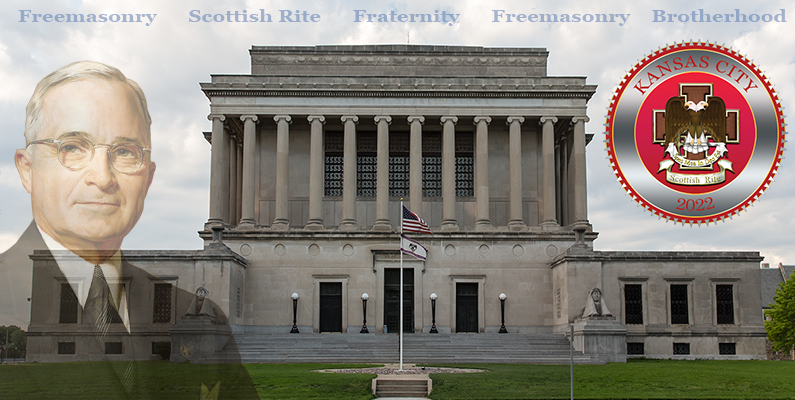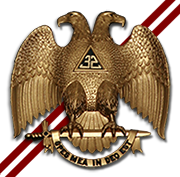
Scottish Rite History
Eleven Gentlemen of Charleston
FOUNDERS of the SUPREME COUNCIL, SOUTHERN JURISDICTION
Mother Council of the World
Ancient and Accepted Scottish Rite of Freemasonry
THE FOUNDERS The biographical sketches contained in the book, particularly for the two senior founders, Colonel John Mitchell and Dr. Frederick Dalcho, represent much more than we have previously known concerning them.? In his Official Bulletin [1870-1890] and the Historical Inquiry [1883], Albert Pike repeatedly pointed out his information on the founders was fragmentary and much of it unconfirmed.? In the present undertaking to prepare a new history of the Supreme Council from 1801 to date, it was considered desirable to make an intensive search for as much new material as? possible on the founders.? For the first time enough detail has been assembled to provide substance to the portraits of these men.? It is important for us to know about them because, as a group, they constitute the parentage of the Mother Supreme Council.? In the full history, from 1801 to date, this chapter of biographies on the founders will be preceded by at least one chapter relating what is known of the establishment? and organization of the Supreme Council, and of the Grand Constitutions of 1786 under which this was done.? For the purpose of presenting these biographies however, it is sufficient merely to quote them from the earliest surviving contemporary document, the Circular through two Hemispheres [commonly referred to as the Supreme Council's manifesto of 1802]:
On the 31st of May, 1801 the Supreme Council of the 33rd degree for the United States of America, was opened with the high honors of Masonry, by Brothers John Mitchell and Frederick Dalcho, Sovereign Grand Inspectors General, and in the course of the present year [1802] the whole number of Grand Inspectors General was completed, agreeably to the Grand Constitutions.
The "whole number" of a Supreme Council was then no more than nine.? The nine members were listed in the Register of 1802; but the manifesto listed two others as having been members, the Comte de Grasse and his father-in-law, Jean Baptiste Delahogue.? These two, having been designated by the Supreme Council [on the 21st of February, 1802] as the Grand Commander and Lieutenant Grand Commander, respectively, for a Supreme Council in the French West Indies, obviously could not serve with these titles as active members in the Supreme Council at Charleston and their names were omitted as members in its Register of 1802.?
By common consent the Supreme Council has since recognized all of the original members of 1801-1802, eleven in number, to have been the founders.? We present the biographies in the order which is believed to have been their seniority, but the absence of surviving minutes or other formal records of the meetings during 1801-1802 deprive us of conclusive evidence on this point.? Signatures and titles appearing on membership patents were, in many instances, obviously affixed even a year or more after the date of the patent.? The titles used with the signatures are correct for the time the signature was affixed, but would not have been at the date of the patent.? It has been a common error to credit a person as holding a title at a particular time because his signature appears on a patent of that date. ?This is not necessarily true except when the signature is that of a presiding officer, or other officer whose signature was required on the patent at the time of issue.? Members of our Supreme Council today are frequently invited to sign their names and titles to patents which were issued prior to the time they were Active Members.
The official correspondence and activities of the founders after 1801 are properly a part of the historical narrative in succeeding chapters and, with a few necessary exceptions have been omitted in the biographies.
Based on much less information than is here presented, Albert Pike made the statement that the Supreme Council and the Rite descended from it had no reason not to be proud of its parentage.? We owe much to these Eleven Gentlemen of Charleston, whose personal character and Masonic zeal contributed so much to the creation of the Mother Supreme Council and its firm establishment.? As will be seen, all but two were born outside of the United States.? They were of different origins, faiths and professions.? Despite these differences there is no evidence any quarrel or dissension ever marred the relationship between these eleven men.? On the contrary, there is every evidence the closest bonds of friendship united them during the remainder of their lives.? Dissensions were to occur later, with the advent of Cerneauism, but this never touched the relationship between the original founders.? It would be unnecessary to labor the point of the lesson their example provides for us.
The Founding Eleven Gentlemen of Charleston
- Colonel John Mitchell (1741-1816) received a patent April 2, 1795, from Barend Moses Spitzer granting him authority as Deputy Inspector General to create a Lodge of Perfection and several Councils and Chapters wherever such Lodges or Chapters were needed. Born in Ireland in 1741, he came to America at an early age, was Deputy Quartermaster General in the Continental Army, and the first Grand Commander of the Supreme Council.
- Dr. Frederick Dalcho (1770-1836) was a physician. He served in the Army and for a while was stationed at Fort Johnson. He formed a partnership with Dr. Isaac Auld, another of the original members, in 1801. He was an outstanding orator and author. In 1807 he published the 1st Edition of Ahiman Rezon. He became an editor of the Charleston Courier and would leave his medical practice to enter the ministry of the Episcopal Church, first becoming a deacon in 1814 and was ordained a minister in 1819.
- Major Thomas Bartholomew Bowen (1742-1805) was born in Ireland and emigrated to America before the revolution. He was a Major in the Continental Army, serving in the Pennsylvania units. He later moved to Charleston and became a printer by trade. He was elected Grand Master of the Ancient Grand Lodge of South Carolina. He also served as Grand Master of the Sublime Grand Lodge of Perfection. He became the first Grand Master of Ceremonies of the new Supreme Council. He died four years later, becoming the first death among the founders.
- Rabbi Abraham Alexander (1743-1816) was one of the first Sovereign Grand Inspectors General. He was born in London in 1743 and immigrated to Charleston in 1771 to assume a position as Rabbi for the Congregation Beth Elohim which he retained until his death. He was described as "a Calligraphist of the first order" and was elected the first Grand Secretary General, presumably until his death. He was also listed as an auditor of the Custom House in the Charleston city directories from 1802-1813. Family tradition has him serving as Collector for the Port of Charleston at the time of his death.
- Emmanuel De La Motta (1760-1821) born in the Danish West Indies of Jewish parentage he emigrated to Charleston in the late 1790s. He received his 33? two weeks after the Supreme Council was founded and served as the first Grand Treasurer of the Supreme Council for some ten years. He was also active in the Beth Elohim Congregation and along with David Nunez Cardozo were leaders in the Jewish Community at a time when a Charleston was the largest Jewish community in the United States. Emmanuel was by trade a commission merchant and auctioneer. He was a member of Friendship Lodge and was devoted to the study of Jewish Literature and Masonic Study.
- Dr. Issaac Auld (1770-1826) was born in Pennsylvania of Scottish Jacobites who had fled to France, then sailed to America. He was an eminent physician, associated in medical practice with Dr. Dalcho and a Congregationalist. He had served as Grand Secretary to the Sublime Grand Lodge of Perfection. He was elected to the Supreme Council on January 10, 1802 and served as Senior Warden of the Lodge of Perfection as well as Junior Warden of the Chapter of Rose Croix. Years later he would succeed Dr. Dalcho as Grand Commander contributing to a sense of continuity in a delicate moment in the council's history.
- Israel De Lieben (1740-1807) was born in Prague, Bohemia. He became a Mason during a stay in Dublin, Ireland and later emigrated to Pennsylvania, to Philadelphia, Savannah and ultimately Charleston where he as well was active in the Beth Elohim Congregation. In 1797 he joined Orange Lodge #4 and became a Hospitaler of the Grand Lodge. He served as Grand Treasurer of the Grand Council and as Keeper of the Seals and Archives of the Consistory. He was made a Sovereign Grand Inspector General.
- Le Comte Alexander Francois Auguste de Grasse (1765-1845) the only son of Admiral Francois Joseph Paul, Comte de Grasse, whose French West Indian fleet together with 3,000 troops helped in the American seige and British surrender at Yorktown in 1781. A river in north New York was later named in honor of Admiral de Grasse. Alexander, his father-in-law, Jean Baptiste Marie Delahogue, and families fled from Santo Domingo to Charleston in 1791. In 1796 de Grasse and Jean Baptiste Delahogue formed a lodge in Charleston, Loge La Candeur composed exclusively of French Roman Catholics. He became a naturalized citizen in 1799. On February 21, 1802 the Supreme Council appointed de Grasse a Grand Inspector General as well as the Grand Commander of the French West Indies at the same time made Delahogue a Grand Inspector General and Lieutenant Grand Commander of the same islands. In 1804, the Supreme Council of France was established in Paris and de Grasse became it's Grand Commander.
- Jean Baptiste Marie Delahogue (1744-1822) was raised at Lodge La Constance, Paris, France. He was the father-in-law of Alexander Francois Auguste de Grasse, and fled to Charleston with de Grasse and their families, from the island of Santo Domingo, then in French hands, to Charleston in 1793. Three years later he joined with de Grasse to establish the Loge La Candeur in Charleston. He was appointed Lieutenant Grand Commander of the Supreme Council of the West Indies. He ultimately succeeded de Grasse as Grand Commander when de Grasse returned to France and became Grand Commander of the newly formed Supreme Council of France. Delahogue became a naturalized citizen of the United States in New Orleans in 1804. The city was acquired as part of the Louisiana Purchase in 1803.
- Moses Clava Levy (1749-1839) was born in Krakow, Poland. He was a prosperous merchant, devoted to his adopted city and country. He was added to the Supreme Council on May 9, 1802.
- Dr. James Moultrie (1766-1836) was the only native South Carolinian among the original members. He was a Doctor of Medicine, and according to Albert Pike, "was one of the foremost Citizens of South Carolina." He was added to the Supreme Council on August 3, 1802. [ Moultrie Memoirs ]

